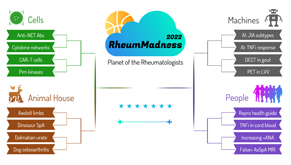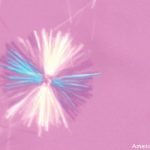Implications
The management of OA is focused not on regeneration, but on symptoms. This approach can involve topical or oral nonsteroidal anti-inflammatory drugs (NSAIDs), physical therapy or eventually hip or knee joint replacement, if needed. However, this study uncovered a potentially new therapeutic target. Although more secrets certainly remain to be discovered about the underpinnings of human cartilage regeneration and axolotl biology, it’s exciting to ponder a distant—or not too distant—future in which gene therapy for OA is possible with the “injection of key regenerative [microRNA] in a joint, singly or in combination, could potentially enhance endogenous repair and resist degeneration of joint tissues in arthritis of all types, including after traumatic injury or insult.”2
Chances in the Tournament
We acknowledge the stiff competition from our furry, so-called, friends: limping dogs and gouty Dalmatians. Nevertheless, we are quite confident in the axolotl’s chances. Deep inside ourselves, we all have an inner axolotl ready to nourish our joints and help perform activities of daily living, such as walking, jumping and climbing stairs. And its full potential can be harnessed with more research and funding from the U.S. National Institutes of Health.
Last, can’t we all agree that axolotls are a lot more endearing than people, emotionless machines and the other non-smiling, faceless molecules in this year’s tournament?
Khiem Vu, MD, is a first-year rheumatology fellow in the Wake Forest School of Medicine Rheumatology Fellowship Program, Winston-Salem, N.C.
Alyssa Strazanac, MD, is a first-year rheumatology fellow in the Wake Forest School of Medicine Rheumatology Fellowship Program, Winston-Salem, N.C.
John Herion, DO, is a second-year rheumatology fellow in the Wake Forest School of Medicine Rheumatology Fellowship Program, Winston-Salem, N.C.
Rami Diab, MD, is a second-year rheumatology fellow in the Wake Forest School of Medicine Rheumatology Fellowship Program, Winston-Salem, N.C.
References
- Deines, T. Mexico City’s endangered axolotl has found fame—is that enough to save it? National Geographic. 2022 Jan 17.
- Hsueh MF, Önnerfjord P, Bolognesi MP, et al. Analysis of ‘old’ proteins unmasks dynamic gradient of cartilage turnover in human limbs. Sci Adv. 2019 Oct 9;5(10):eaax3203.
 Experience All of RheumMadness
Experience All of RheumMadness
During RheumMadness, rheumatology concepts represent teams that compete against each other in a tournament, much like basketball teams do in the NCAA’s March Madness tournament. In a series for The Rheumatologist, readers will get a chance to read the scouting reports. Check out the reports from each region:



